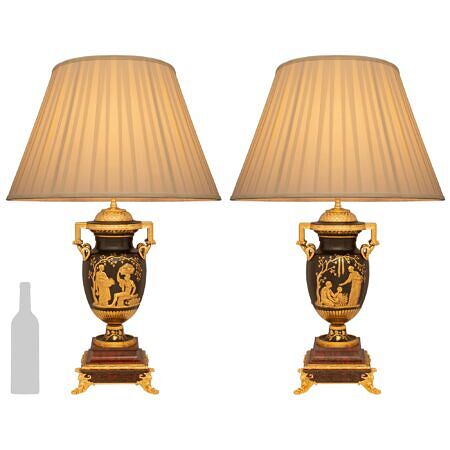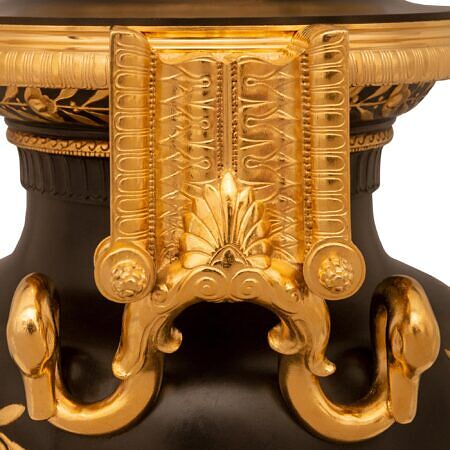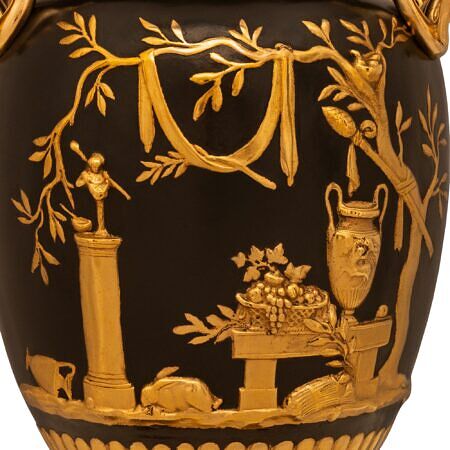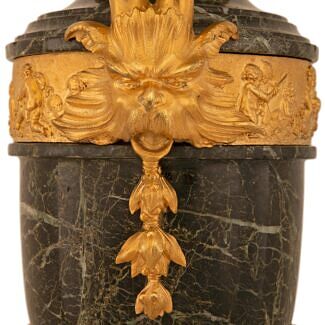A French 19th century Belle Epoque period Neo-Greek st. patinated Bronze and Ormolu lamps, signed Ferdinand Barbedienne
List: $23,500.00
A pair of most impressive and large scale French 19th century Belle Epoque period Neo-Greek st. patinated Bronze and Ormolu lamps, signed Ferdinand Barbedienne. The pair of baluster shaped urns are raised by square Rouge Griotte marble and Ormolu mounted... — Read More
A pair of most impressive and large scale French 19th century Belle Epoque period Neo-Greek st. patinated Bronze and Ormolu lamps, signed Ferdinand Barbedienne. The pair of baluster shaped urns are raised by square Rouge Griotte marble and Ormolu mounted bases. The lower level of the marble base is elevated by an ormolu band and 'C' scrolled corner supports decorated by acanthus leaves and a bottom lion's paw. Above is the berried laurel band below the concave edge upper Rouge Griotte marble tier. The urn has circular patinated Bronze socles with a scrolled grapevine designs. The bottom of the urn is elegantly decorated by a gilt gadroon below the scenes of a tree with a hanging tied filled bag and peacock on a pedestal looking at a sheep trying to get to the fruit in a basket. While the opposite scene is a standing woman choosing a fruit from a seated farmer under a tree. The urn above has two Greek key like handles ending with elegant swan heads. The top rim of the urn has a gilt berried foliage band under the lattice decorated top dome. — Read Less
All light fixtures have been inspected and rewired to US standards.
- Item # 12360
-
H: 32.5 in L: 9.25 in D: 9.25 in
H: 83 cm L: 23 cm D: 23 cm
- Shade Diameter: 18 in
- France
- 19th Century
- Marble/Stone, Ormolu, Patinated Bronze
- Belle Époque Period Read More, Neo-Greek st. Read More
- Ferdinand Barbedienne Read More
Related products
-
# 13230 - H: 29" L: 7" D: 7"
-
# 12742 - H: 34" L: 8" D: 8"
-
# 7769 - H: 24" L: 8" D: 6"
-
# 13083 - H: 29" L: 8" D: 8"































